Preface
Contents
Chapter-1
Number Systems and Data Communication
1.1 Introduction
1.2 Analog Signals
1.3 Digital Signals
1.4 Number System
1.5 Coding Schemes
1.6 Clock
1.7 Transmission Modes
1.8 Transmission Methods
Chapter-2
Logic Gates and Introduction to Computer Architecture
2.1 Introduction
2.2 Logic Gates
2.3 Integrated Circuit (IC) Classification
2.4 Registers
2.5 Introduction to Computer Architecture
2.5.1 Components of a Microcomputer
2.5.2 CPU Architecture
2.6 Memory
2.7 Multiplexer and Decoder
Chapter-3
ARM Instructions Part I
3.1 Introduction
3.2 Instruction Set Architecture (ISA)
3.3 ARM Instructions
3.3.1 Data Processing Instructions
3.4 Register Swap Instructions (MOV and MVN)
3.5 Shift and Rotate Instructions
3.6 ARM Unconditional Instructions and Conditional Instructions
3.7 ARM Data Processing Instruction Format
3.8 Stack Operation and Instructions
3.9 Branch (B) and Branch with Link Instruction (BL)
3.10 Multiply (MUL) and Multiply-Accumulate (MLA) Instructions
Chapter-4
ARM Instructions and Part II
4.1 ARM Data Transfer Instructions
4.1.1 Load Instructions (LDR)
4.1.2 ARM Pseudo Instructions
4.1.3 Store Instructions (STR)
4.2 ARM Addressing Mode
4.2.1 Register Indirect Addressing
4.2.2 Pre-Index Addressing
4.2.3 Pre-Index Addressing with Auto Index
4.2.4 Post -Index Addressing
4.3 Data Transfer Instruction Format
4.4 Block Transfer Instruction and Instruction Format
4.5 Swap Memory and Register (SWAP)
4.6 Bits Field Instructions
4.7 Data Representation and Memory
Chapter-5
ARM Assembly Language Programming Using Keil Development Tools Introduction
5.1 Introduction
5.2 Keil Development Tools for ARM Assembly
5.2.1 Building a Project
5.2.2 Debugging a Program
5.3 Program Template
5.4 Programming Rules
5.5 Directives
5.5.1 Data Directive
Chapter-6
ARM Cortex-M3 Processor and MBED NXP LPC1768
6.1 Introduction
6.2 MBED NXP LPC1768
6.3 Basic GPIO Programming
6.4 Flashing the NXP LPC1768
Chapter-7
Lab Experiments
7.1 Introduction
7.2 Lab#1 Binary Counter Using Onboard LEDs
7.3 Lab2: Configuring the Real-Time Clock (RTC)
7.4 Lab#3 Configuring Analog-To-Digital Converter (ADC)
7.5 Lab #4: Digital to Analog Converter (DAC)
7.6 Experiment #5: Binary to Hexadecimal Display
7.7 Universal Asynchronous Receiver/Transmitter (UART)
Solution to the Problems and Questions
Chapter 1
Chapter 2
Chapter 3
Chapter 4
Chapter 5
References
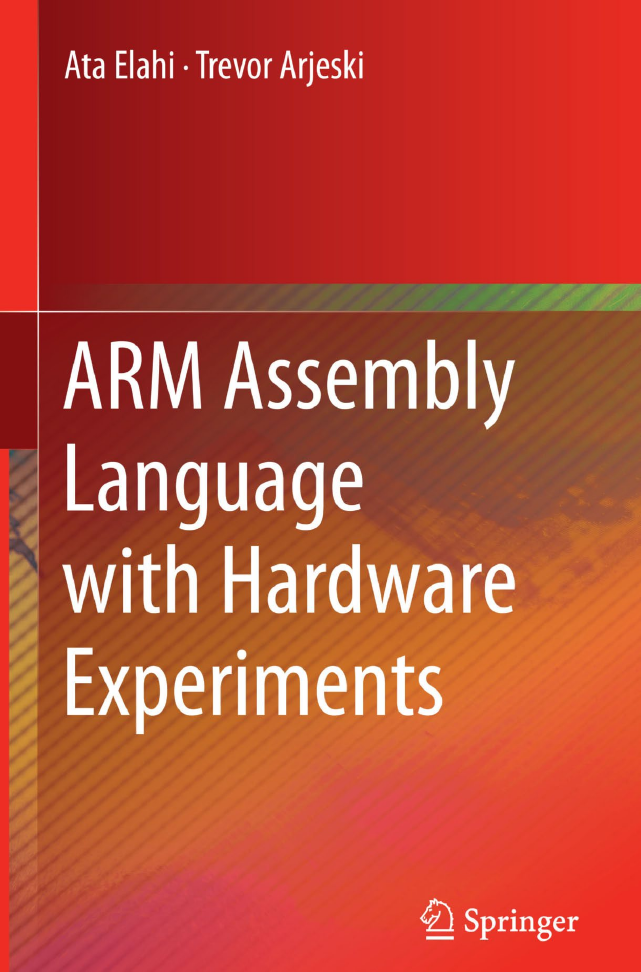
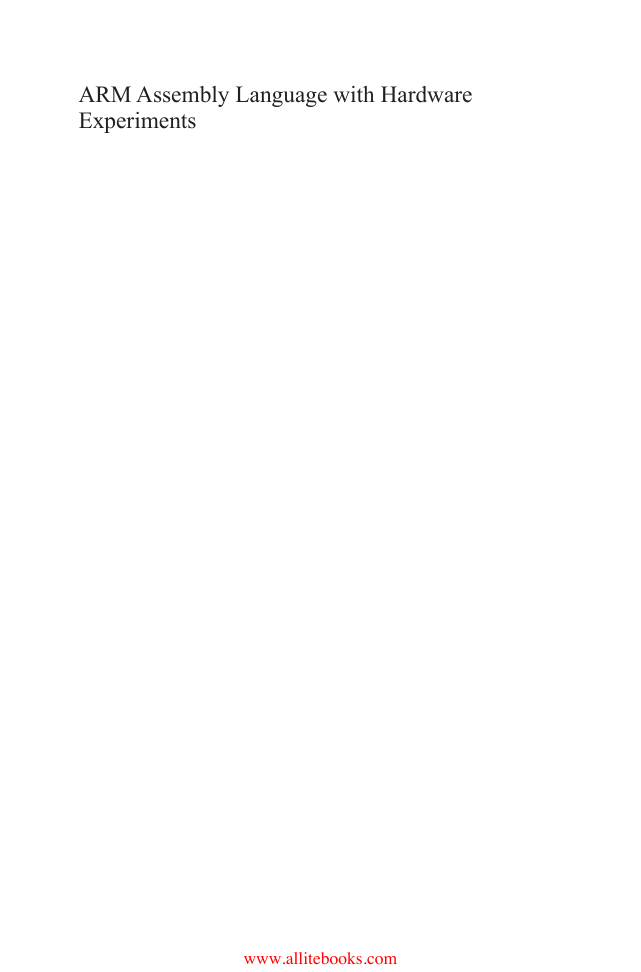
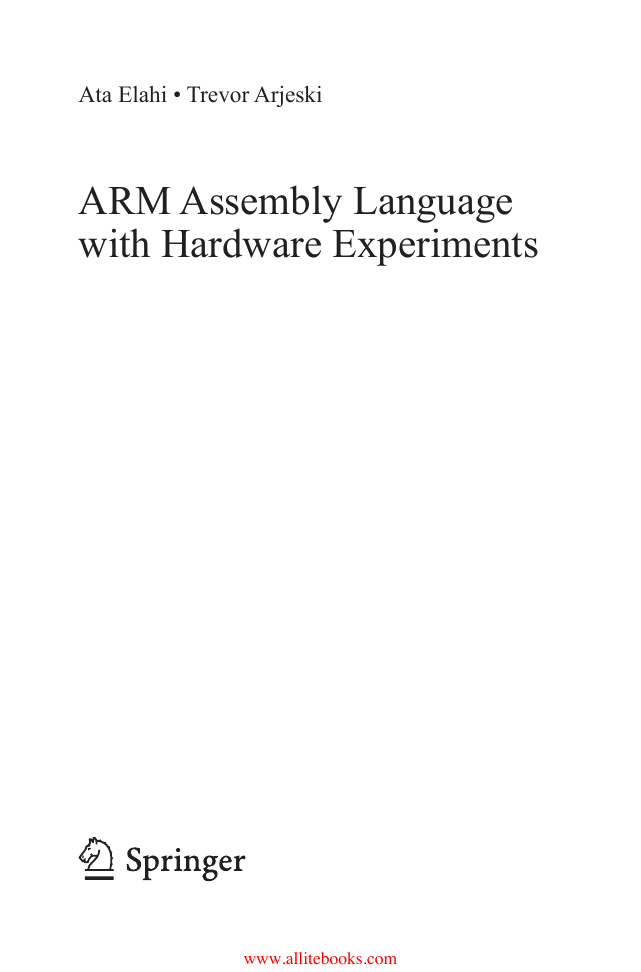
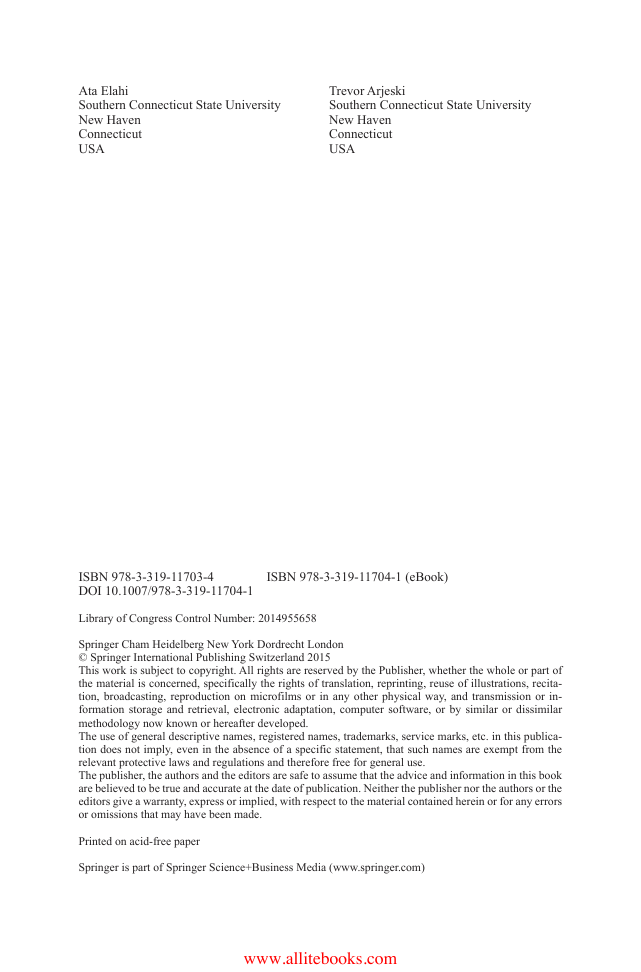
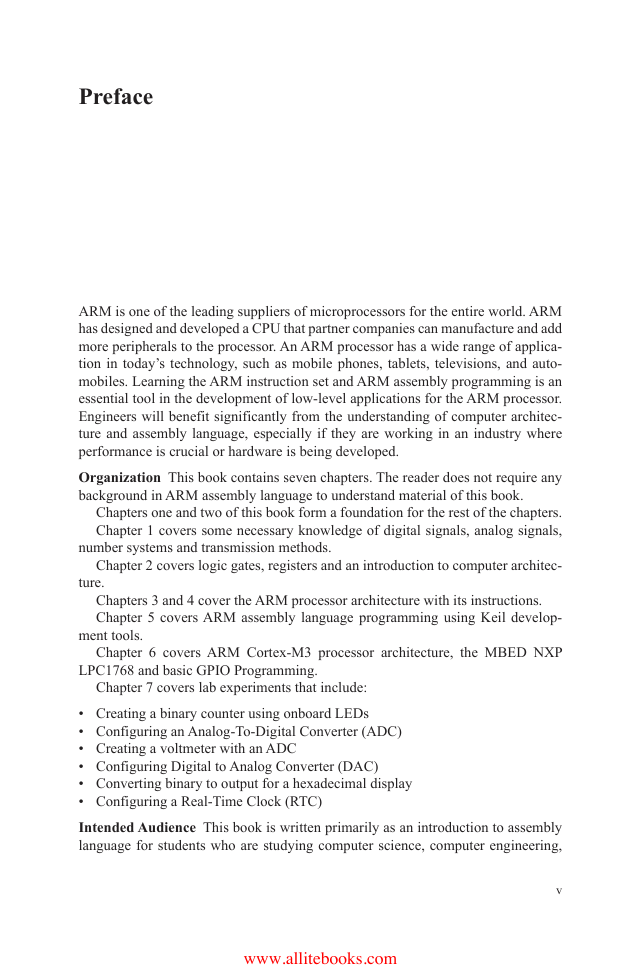


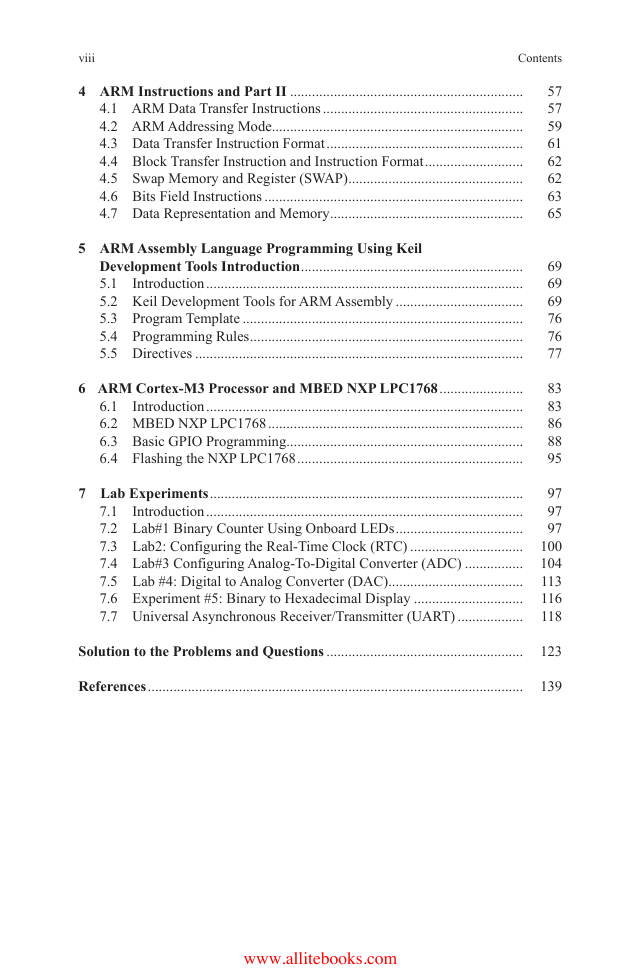








 2023年江西萍乡中考道德与法治真题及答案.doc
2023年江西萍乡中考道德与法治真题及答案.doc 2012年重庆南川中考生物真题及答案.doc
2012年重庆南川中考生物真题及答案.doc 2013年江西师范大学地理学综合及文艺理论基础考研真题.doc
2013年江西师范大学地理学综合及文艺理论基础考研真题.doc 2020年四川甘孜小升初语文真题及答案I卷.doc
2020年四川甘孜小升初语文真题及答案I卷.doc 2020年注册岩土工程师专业基础考试真题及答案.doc
2020年注册岩土工程师专业基础考试真题及答案.doc 2023-2024学年福建省厦门市九年级上学期数学月考试题及答案.doc
2023-2024学年福建省厦门市九年级上学期数学月考试题及答案.doc 2021-2022学年辽宁省沈阳市大东区九年级上学期语文期末试题及答案.doc
2021-2022学年辽宁省沈阳市大东区九年级上学期语文期末试题及答案.doc 2022-2023学年北京东城区初三第一学期物理期末试卷及答案.doc
2022-2023学年北京东城区初三第一学期物理期末试卷及答案.doc 2018上半年江西教师资格初中地理学科知识与教学能力真题及答案.doc
2018上半年江西教师资格初中地理学科知识与教学能力真题及答案.doc 2012年河北国家公务员申论考试真题及答案-省级.doc
2012年河北国家公务员申论考试真题及答案-省级.doc 2020-2021学年江苏省扬州市江都区邵樊片九年级上学期数学第一次质量检测试题及答案.doc
2020-2021学年江苏省扬州市江都区邵樊片九年级上学期数学第一次质量检测试题及答案.doc 2022下半年黑龙江教师资格证中学综合素质真题及答案.doc
2022下半年黑龙江教师资格证中学综合素质真题及答案.doc